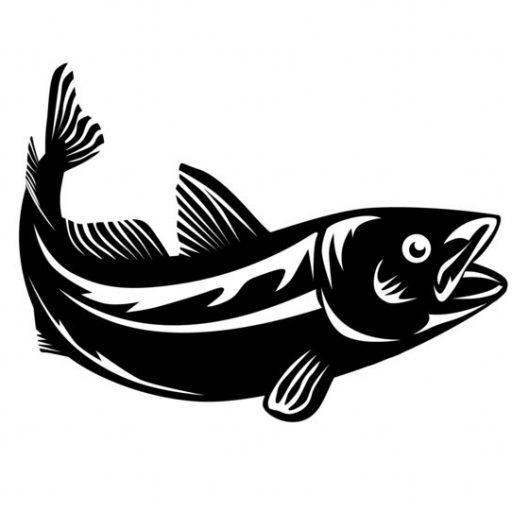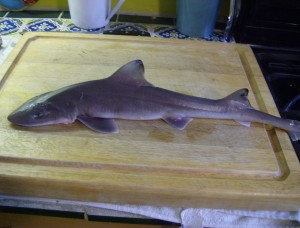Locally caught Cape Shark are primarily available in New England from April through July and October through January.
Cape Shark, are small sharks abundant in the western Atlantic Ocean from the Mid-Atlantic states to Newfoundland. The most abundant species found in northeastern U.S. coastal waters is the spiny Cape Shark which has a characteristic sharp spine in front of each dorsal fin. The second most abundant species is the smooth dogfish which has no spines. Cape shark have a body shape similar to other sharks and are brown to slate gray colored. Unlike other sharks that have pointed razor sharp teeth, cape shark have reduced and flattened teeth. Cape Shark tend to travel in schools made up of fish of similar size.
Commercial fishermen frequently catch cape shark as by-catch when fishing for traditional fish species like cod, pollack, hake or flounder. Cape Shark are usually caught by trawls or fixed nets. Cape Shark are reported to move closer to shore in the summer and off shore near the deep waters along the continental shelf in the winter.
Like other sharks, cape shark have a skeleton made of cartilage instead of bone and a metabolism different from the bony fish. For example, Cape Shark accumulate urea, a waste product, in their blood and excrete it through their skin. This enables them to maintain an osmotic pressure balance with their environment. Because of its primitive metabolism cape shark and other sharks need to be bled, dressed, and iced properly to maintain quality. When cape shark are mishandled in ways that promote bacterial growth, urea can be converted to ammonia and give dogfish an unpleasant “spoiled” taste and odor. When properly handled, cape shark fillets are highly valued and have the advantage of being truly “boneless”. Port Clyde Fresh Catch has strict handling guidelines for our fishermen to ensure our fillets are the highest quality.
Cape shark have a lean white meat with a sweet, mild flavor and a fairly firm texture. Cape shark has been utilized in Europe for many years. In England, Cape shark is widely used as the “fish” in their traditional “fish and chips”. A traditional Portuguese recipe, Matelote, combines cape shark, burgundy, cognac, onions, garlic, mushrooms, shrimp, and lemon. In Germany smoked cape shark belly flaps are called schillerlocken and are considered a delicacy. Here in the United States much of the cape shark catch is exported to Europe and local market demand has been minimal.
As with other fish and shellfish, cape shark provide a good source of protein, B-vitamins and some trace minerals. Cape shark have a moderately high fat content, averaging around 10 percent total fat. Cape shark are also a good source of heart healthy omega-3 fatty acids, and provide as much as other species like salmon, tuna, and mackerel.
Cape shark can be prepared in a wide variety of ways, and because of the absence of bones it is a good choice for children. Lightly battered and deep fried cape shark can provide a new and tasty alternative to frozen fish sticks or portions. Cape shark steaks can be prepared by broiling or grilling using recipes that call for swordfish or other sharks. Cape Shark is firm enough to make kebabs for the grill. Cape Shark is also a good choice for chowders or fish stews, and baked dishes and casseroles with tomatoes, onions, herbs, and other vegetables
(207) 701-7032
support@portclydefreshcatch.com

